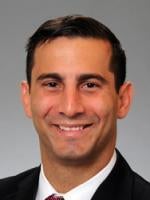The Centers for Medicare and Medicaid Services (CMS) just released its 2021 Final Rule (Physician Fee Schedule), with telehealth policy changes and a list of new services covered under Medicare. Actions taken by CMS during the COVID-19 pandemic “have unleashed an explosion in telehealth innovation, and we’re now moving to make many of these changes permanent,” said HHS Secretary Alex Azar, promising CMS will “keep exploring ways to deliver Americans access to health care in the setting that they and their doctor decide makes sense for them.”
Compared to last year, where CMS made only minor additions to telehealth services, the 2021 changes are bold and designed to more deliberately expand the use of telehealth technologies among Medicare beneficiaries as the country continues to combat the Public Health Emergency (PHE).
This article discusses the new changes in the Final Rule that are expected to have the greatest impact on the provision of telehealth services. Look for our forthcoming articles on the new rules for remote patient monitoring and other virtual services.
1. Direct Supervision via Telehealth
Until December 31, 2021, or the end of the PHE (whichever is later), “direct supervision” under 42 C.F.R. § 410.21 can be provided using real-time, interactive audio-video technology.
The current definition of direct supervision requires the physician to be physically present in the office suite and immediately available to furnish assistance and direction throughout the performance of the procedure. Under the new definition, direct supervision can be met if the supervising physician is immediately available to engage via interactive audio-video. This change does not require the physician’s real-time presence or observation of the service via interactive audio-video technology throughout the performance of the procedure. Audio-only technology is not sufficient to fulfill direct supervision requirements.
The new definition opens opportunities for telehealth and incident-to billing. CMS acknowledged there are no Medicare regulations that explicitly prohibit eligible distant site practitioners from billing for telehealth services provided incident-to their services. But because the current definition of direct supervision required on-site presence of the billing clinician when the service was provided, it was difficult for a billing clinician to fulfill direct supervision of services provided via telehealth incident-to their professional services by auxiliary personnel. Under the new definition, CMS clarified that services that can be provided incident-to may be provided via telehealth incident-to a distant-site physician’s service and under the direct supervision of the billing practitioner via virtual presence.
The duration of this change is time-limited because CMS has concerns that widespread direct supervision through virtual presence may not be safe for some clinical situations and overutilization could occur. CMS will study and collect data on whether this change may be appropriate on a permanent basis after the PHE expires.
2. Extended Audio-Only Assessment Services
On an interim basis, for the duration of 2021, CMS created HCPCS code G2252 for extended services delivered via synchronous communications technology, including audio-only (e.g., virtual check-ins). The service is considered to be a communication technology-based service (CTBS) and is subject to all the other requirements of CTBS.
-
G2252 (Brief communication technology-based service, e.g. virtual check-in, by a physician or other qualified health care professional who can report evaluation and management services, provided to an established patient, not originating from a related E/M service provided within the previous 7 days nor leading to an E/M service or procedure within the next 24 hours or soonest available appointment; 11-20 minutes of medical discussion.)
G2252 is cross-walked to CPT code 99442 for reimbursement purposes, making its reimbursement higher than the current more limited duration virtual check-in code. The code is intended for situations when the acuity of a patient’s problem is not necessarily likely to warrant an in-person visit, but when additional time is needed to make this assessment. Because it is a CTBS, the traditional Telehealth Service location restrictions do not apply, which in part means G2252 can be used regardless of the patient’s geographic location and regardless of whether the PHE ends prior to the end of CY2021. Thus, while the audio only telehealth codes currently approved subject to Section 1135 PHE waivers may only be used during the PHE, this code would extend beyond the PHE. The communication technology must be synchronous and is subject to the same billing requirements as the other virtual check-in codes. CMS will consider whether this interim policy should be adopted permanently.
3. New Frequency Limitations for Telehealth in Nursing Facilities
CMS is reducing the frequency limitation for coverage of subsequent nursing facility care services furnished via telehealth from once every 30 days to once every 14 days. The original 30-day restriction was due to concerns on the acuity and complexity of nursing facility residents, and to ensure nursing facility residents have frequent encounters with their admitting practitioner. CMS was persuaded that the use of telehealth is crucial to maintaining continuity of care in nursing facilities, and to honor the independent medical judgment of treating clinicians to decide whether telehealth vs in-person care should be used, depending on the needs of each specific resident.
Frequency limitations have already been temporarily waived for the duration of the PHE, but this new rule change is permanent, effective January 1, 2021.
CMS declined to make any changes to the telehealth frequency limitations for hospital inpatient visits and critical care consultations.
4. Policies on Communications Technology Based Services
-
CTBS by Therapists. HCPCS codes G2061 through G2063 may be billed by licensed clinical social workers, clinical psychologists, physical therapists (PT), occupational therapists (OT), speech language pathologists (SLP), and other non-physician practitioners who bill Medicare directly for their services, when the service falls within the scope of the practitioner’s benefit category. This billing has been temporarily allowed under the PHE waivers, but this new rule change is permanent, effective January 1, 2021. To facilitate billing of CTBS by therapists, CMS designated HCPCS codes G2250, G2251, G2061, G2062, and G2063 as “sometimes therapy” services. When billed by a private practice PT, OT, or SLP, the codes would need to include the corresponding -GO, -GP, or -GN therapy modifier to signify the CTBS is furnished as therapy services furnished under an OT, PT, or SLP plan of care.
-
CTBS by Practitioners Who Do Not Bill E/M. CTBS billing is being extended to other non-physician practitioners through two new “G codes” that can be billed by practitioners who cannot independently bill for E/M services.
-
G2250 (Remote assessment of recorded video and/or images submitted by an established patient (e.g., store and forward), including interpretation with follow-up with the CMS-1734-P 114 patient within 24 business hours, not originating from a related service provided within the previous 7 days nor leading to a service or procedure within the next 24 hours or soonest available appointment.)
-
G2251 (Brief communication technology-based service, e.g. virtual check-in, by a qualified health care professional who cannot report evaluation and management services, provided to an established patient, not originating from a related service provided within the previous 7 days nor leading to a service or procedure within the next 24 hours or soonest available appointment; 5-10 minutes of medical discussion)
-
Reimbursement for these codes will be equal to the reimbursement for G2010 and G2012 which are billed by physicians and other non-physician practitioners who can bill for E/M services. This change is effective January 1, 2021.
-
Consent. Practitioners must continue to obtain patient consent for CTBS (the consent is to notify the patient of copay/cost sharing). CMS stated the timing or manner in which consent is acquired should not interfere with the provision of the service itself. The consent can be verbal or written, and can be documented by the billing practitioner or by auxiliary staff under general supervision.
-
Compliance Tip. When a brief CTBS originates from a related E/M service (including one furnished as a telehealth service) provided within the previous 7 days by the same physician or other qualified health care professional, this service is considered bundled into that previous E/M service and is not separately billable to Medicare or to the beneficiary (i.e., it is a provider-liable service).
5. New Telehealth Services For 2021
Starting January 1, 2021, the following codes will be available on a permanent basis as part of the covered Medicare telehealth services list:
|
Service Type |
HCPCS Code |
Service Descriptor |
|
Visit Complexity Associated with Certain Office/Outpatient E/Ms |
G2211 (formerly GPC1X) |
Visit complexity inherent to evaluation and management associated with medical care services that serve as the continuing focal point for all needed health care services and/or with medical care services that are part of ongoing care related to a patient’s single, serious condition or a complex condition. (Add-on code, list separately in addition to an evaluation and management visit, new or established) |
|
Prolonged Services |
G2212 (formerly 99XXX) |
Prolonged office or other outpatient evaluation and management service(s) beyond the maximum required time of the primary procedure which has been selected using total time on the date of the primary service; each additional 15 minutes by the physician or qualified healthcare professional,
|
|
Group Psychotherapy |
90853 |
Group psychotherapy (other than of a multiple-family group) |
|
Neurobehavioral Status Exam |
96121 |
Neurobehavioral status exam (clinical assessment of thinking, reasoning and judgment, [e.g., acquired knowledge, attention, language, memory, planning and problem solving, and visual spatial abilities]), by physician or other qualified health care professional, both face-to-face time with the patient and time interpreting test results and preparing the report; each additional hour (List separately in addition to code for primary procedure) |
|
Care Planning for Patients with Cognitive Impairment |
99483 |
Assessment of and care planning for a patient with cognitive impairment, requiring an independent historian, in the office or other outpatient, home or domiciliary or rest home, with all of the following required elements: Cognition-focused evaluation including a pertinent history and examination; Medical decision making of moderate or high complexity; Functional assessment (e.g., basic and instrumental activities of daily living), including decision-making capacity; Use of standardized instruments for staging of dementia (e.g., functional assessment staging test [FAST], clinical dementia rating [CDR]); Medication reconciliation and review for high-risk medications; Evaluation for neuropsychiatric and behavioral symptoms, including depression, including use of standardized screening instrument(s); Evaluation of safety (e.g., home), including motor vehicle operation; Identification of caregiver(s), caregiver knowledge, caregiver needs, social supports, and the willingness of caregiver to take on caregiving tasks; Development, updating or revision, or review of an Advance Care Plan; Creation of a written care plan, including initial plans to address any neuropsychiatric symptoms, neuro-cognitive symptoms, functional limitations, and referral to community resources as needed (e.g., rehabilitation services, adult day programs, support groups) shared with the patient and/or caregiver with initial education and support. Typically, 50 minutes are spent face-to-face with the patient and/or family or caregiver. |
|
Domiciliary, Rest Home, or Custodial Care services |
99334 |
Domiciliary or rest home visit for the evaluation and management of an established patient, which requires at least 2 of these 3 key components: A problem focused interval history; A problem focused examination; Straightforward medical decision making. Counseling and/or coordination of care with other physicians, other qualified health care professionals, or agencies are provided consistent with the nature of the problem(s) and the patient’s and/or family’s needs. Usually, the presenting problem(s) are self-limited or minor. Typically, 15 minutes are spent with the patient and/or family or caregiver. |
|
Home Visits |
99347 |
Home visit for the evaluation and management of an established patient, which requires at least 2 of these 3 key components: A problem focused interval history; A problem focused examination; Straightforward medical decision making. Counseling and/or coordination of care with other physicians, other qualified health care professionals, or agencies are provided consistent with the nature of the problem(s) and the patient’s and/or family’s needs. Usually, the presenting problem(s) are self-limited or minor. Typically, 15 minutes are spent face-to-face with the patient and/or family. |
|
99348 |
Home visit for the evaluation and management of an established patient, which requires at least 2 of these 3 key components: An expanded problem focused interval history; An expanded problem focused examination; Medical decision making of low complexity. Counseling and/or coordination of care with other physicians, other qualified health care professionals, or agencies are provided consistent with the nature of the problem(s) and the patient’s and/or family’s needs. Usually, the presenting problem(s) are of low to moderate severity. Typically, 25 minutes are spent face-to-face with the patient and/or family. |
CMS classified these services as Category 1 under a streamlined review process based on their determination these services are sufficiently similar to services already on the list of Medicare telehealth services. For codes 99437-99438, the patient’s home can serve as a qualifying originating site when the patient is being treated for a substance use disorder or a co-occurring mental health disorder, as permitted by the SUPPORT Act.
CMS also finalized its proposal to allow all Category 3 telehealth services added to the Medicare telehealth list during the public health emergency (PHE) for the COVID-19 pandemic to remain on the list through the calendar year in which the PHE ends. These Category 3 services include the following:
-
Domiciliary, Rest Home, or Custodial Care services, Established patients (CPT 99336-99337)
-
Home Visits, Established Patient (CPT 99349-99350)
-
Emergency Department Visits, Levels 1-5 (CPT 99281-99285)
-
Nursing facilities discharge day management (CPT 99315-99316)
-
Psychological and Neuropsychological Testing ( CPT 96130- 96133; CPT 96136- 96139)
-
Therapy Services, Physical and Occupational Therapy, All levels (CPT 97161- 97168; CPT 97110, 97112, 97116, 97535, 97750, 97755, 97760, 97761, 92521- 92524, 92507)
-
Hospital discharge day management (CPT 99238- 99239)
-
Inpatient Neonatal and Pediatric Critical Care, Subsequent (CPT 99469, 99472, 99476)
-
Continuing Neonatal Intensive Care Services (CPT 99478- 99480)
-
Critical Care Services (CPT 99291-99292)
-
End-Stage Renal Disease Monthly Capitation Payment codes (CPT 90952, 90953, 90956, 90959, and 90962)
-
Subsequent Observation and Observation Discharge Day Management (CPT 99217; CPT 99224- 99226)
Coverage of other codes added to the covered list during the PHE not within Category 3 or that have not been permanently added to the covered list will expire at the end of the PHE.
Conclusion
Continued expansions in Medicare reimbursement mean providers should make enhancements to telehealth programs now, both for the immediate cost savings and growing opportunities for revenue generation, to say nothing of clinical quality and patient satisfaction. However, providers should be mindful of any sunset provisions on these expansions and be prepared to adjust operations in accordance with those timelines. We will continue to monitor CMS for any rule changes or guidance that affect or improve telehealth opportunities.






 />i
/>i
